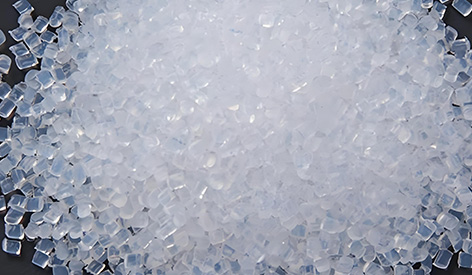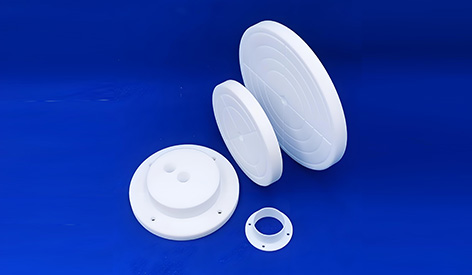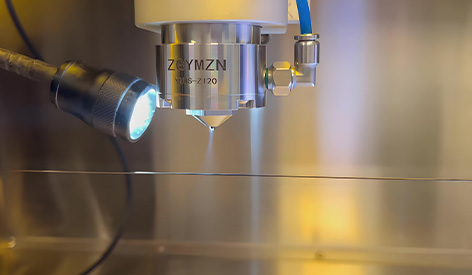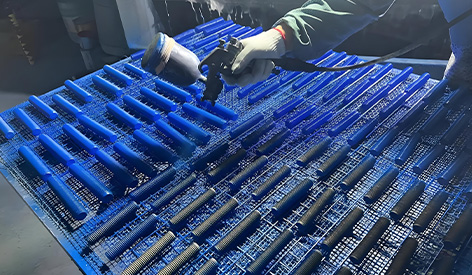ㆍPrivacy: We respect your privacy. Here you can find an example of a non-disclosure agreement. By submitting this form, you agree to our terms & conditions and privacy policy.
Views: 1 Author: Allen Xiao Publish Time: 2025-10-16 Origin: Site








In the world of industrial manufacturing, the application of specialized coatings has become essential for enhancing the performance, durability, and efficiency of mechanical parts. Among these, Teflon—a well-known brand name for polytetrafluoroethylene (PTFE)—stands out due to its exceptional non-stick, chemical resistance, and low-friction properties. This article delves into the use of Teflon and PTFE coatings in part applications, covering key aspects such as spray processes, safety considerations, and technical parameters. By exploring topics like PTFE coating spray, bonding techniques, and thickness control, we aim to provide a comprehensive guide for engineers, manufacturers, and industry professionals. Whether you're dealing with automotive components, food processing equipment, or aerospace parts, understanding these coatings can lead to improved product life and reduced maintenance costs. Let's dive into the details, starting with an overview of PTFE and Teflon.
content:
PTFE is a type of man-made material that is very slippery and doesn't react easily with other chemicals. Think of it like a superhero cape for objects—it protects them from sticking, rust, and heat! The brand Teflon is just one name for PTFE, but people often use "Teflon" to talk about any PTFE coating. This material is used on many parts, like car engines or food machines, to help them move smoothly and avoid damage. For example, when PTFE is put on a baking tray, food slides right off, making cleanup easy. It's also great for parts that get hot or wet because it doesn't melt or wear out quickly. So, in simple terms, PTFE and Teflon are like invisible shields that keep things in good shape.

PTFE coating spray is a way to put this slippery material onto objects using a spray gun, kind of like spraying paint. First, the object is cleaned well so the coating can stick properly. Then, a liquid mix with tiny PTFE particles is sprayed evenly onto the surface. After that, it's baked in an oven to make it hard and durable. This method is great for covering tricky shapes, like gears or tools, because the spray can reach every corner. For instance, in a factory, workers might use PTFE coating spray on metal parts to stop them from rubbing together and wearing out. This helps machines run smoother and last longer without needing fixes. It's a popular choice because it's easy to do and works on many different materials.
You might hear people ask, "Is Teflon safe?" The good news is, yes, it's generally safe when used correctly! PTFE itself is not poisonous and doesn't harm us once it's dried and baked onto an object. However, when it's being sprayed and heated, it can let out fumes that aren't good to breathe in. That's why workers in factories wear masks and use ventilated rooms to stay safe. For everyday things like cookware or medical tools, Teflon coatings are tested to make sure they're harmless. Companies also avoid using bad chemicals in the spray. So, if you see a non-stick pan or a coated machine part, it's safe to use as long as it's made properly. This makes Teflon a trusted choice for many products.

The PTFE spray coating process is like following a recipe to make a perfect coating. Here's how it works in simple steps:
Clean the Part: First, the object is washed and scrubbed to remove dirt and grease. This helps the coating stick better.
Spray the Coating: Next, a special spray gun is used to cover the part with a thin layer of PTFE liquid. It's important to spray evenly so there are no thick or thin spots.
Bake It: After spraying, the part goes into a hot oven. The heat makes the PTFE melt together and form a strong, smooth layer.
This process is used for things like electrical parts or tools that need protection from water or chemicals. For example, a PTFE-coated screw won't rust easily, even in rainy weather. By doing each step carefully, factories ensure the coating works well and lasts a long time.
PTFE bonded coating spray is a stronger version of the regular spray. It has extra ingredients that help it stick really well to surfaces, especially on parts that face rough conditions like high heat or lots of movement. Imagine using super glue with the spray—it makes the coating bond tightly so it doesn't peel off. This type is often used in cars or airplanes for parts like engine pieces or wheels. For instance, if a bike chain has a PTFE bonded coating, it won't get rusty and will move smoothly without squeaking. This method lets manufacturers put on a thin but tough layer that saves money and makes parts more reliable.

Spray PTFE coating paint comes in different forms, just like how you have different types of paint for art projects. Some are water-based, which are better for the environment, and others are solvent-based, which dry faster. There's also powder paint that turns into a coating when heated. When choosing which one to use, people think about what the part will do. For example, if it's for a toy that needs to be safe, they might pick a water-based spray. Or, for a part that gets very hot, they'd choose one that can handle high temperatures. These paints can even be colored or mixed with other materials to make them harder. By picking the right type, factories make sure the coated part does its job perfectly.
Getting the right PTFE spray coating thickness is super important. If the layer is too thin, it might not protect the part well. If it's too thick, it could crack or not fit properly. The thickness is usually measured in micrometers—that's really thin, like a strand of hair! Workers use tools to check the thickness during spraying to make sure it's just right. For example, on a non-stick pan, the coating needs to be thick enough to stop food from sticking but not so thick that it chips off. In big factories, machines help control the spray to keep the thickness even on every part. This attention to detail helps products work better and avoids waste.

Spray PTFE coating has lots of cool benefits that make it useful for all kinds of parts. Here are some key ones:
Non-Stick Surface: Things don't stick to it, so cleanup is easy. Think of how syrup slides off a coated spoon!
Reduces Friction: It makes parts slide past each other smoothly, which saves energy and prevents wear. For example, coated slides in a playground won't squeak or get stuck.
Resists Chemicals and Heat: It can handle harsh cleaners or high temperatures without getting damaged. This is why it's used in science labs or car engines.
Long-Lasting: Coated parts don't need to be replaced often, which saves money and time.
These advantages help in many areas, from making kitchen gadgets to industrial machines work better and safer.
In summary, Teflon and PTFE coatings play a vital role in enhancing the performance and durability of industrial parts through methods like PTFE coating spray and bonded techniques. From ensuring safety with proper handling to mastering processes like thickness control, these coatings offer a reliable solution for reducing friction, resisting chemicals, and extending part life. By understanding key aspects such as the PTFE spray coating process and selection of appropriate paints, industries can optimize their applications across sectors like automotive, food processing, and aerospace. As technology advances, we can expect further innovations in PTFE formulations and application methods, driving even greater efficiencies. Ultimately, incorporating spray PTFE coating into part manufacturing not only boosts productivity but also supports sustainable practices by reducing waste and energy use. For professionals in the field, staying informed about these developments is essential for leveraging the full potential of Teflon coatings in their operations.
content is empty!

